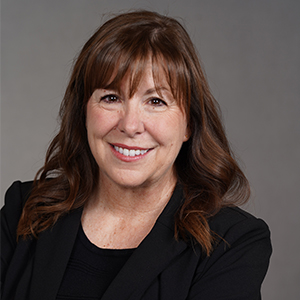HousingWire Editor in Chief Sarah Wheeler sat down with Paul Hurst, chief innovation officer at First American, to talk about the challenge of attracting and retaining tech talent and how to know if a project has a big enough vision.
Sarah Wheeler: How do you think about buy versus build?
Paul Hurst: Before I joined First American, I worked with a lot of companies to answer this exact question. My view is that you should be very sober about where you have a right to win. Given enough capital, and talent, you can build a lot of technology. If you will be the best in the world at building and distributing that tech, you should build. For everything else, you should partner with other people.
At First American, we focus on building internally where we think we have the right to win: digitizing and automating settlement, the search and examination process (title decisions), and extracting public record data from the 3500+ counties across the country. Everything else we look to partner. RON is a great example: Only 15-20% of RON happens in real estate — everything else is in other industries. If we build it, we can only monetize it across that 15-20%. So we partner with Notarize, which as a third-party company can spread that monetization across multiple industries and therefore has an R&D investment advantage.
SW: How is First American leveraging AI?
PH: Generative AI has certainly captured public attention over the last 18 months, but obviously AI has been going on a lot longer than that. We’ve been investing heavily in AI for years — we have more than 10 patents on data extraction from public record data. So generative AI doesn’t change our strategy, but advancements in AI are like a turbocharger for all of those innovation priorities, helping us to do things faster and cheaper across our existing areas of innovation.
One new use case that’s emerged with specifically generative AI, is solving for what I call the knowledge problem. We, like many companies, have a lot of knowledge in email and systems across our business. How do we get that information and organize it in a way that helps our employees do their job quickly and effectively?
One of the things that we are always conscious of at First American is the concept of proprietary IP. We’ve been engaging a lot with Microsoft because we’re very comfortable with them. Real estate companies might want to engage with AI, they might want to use those tools. But you’ve also got to think through what’s your data worth? And how do you protect it?
Lots of people talk about AI in real estate as: how do we reduce the number of FTEs at our company? I think that’s kind of a minimalist way of looking at things. I like to think about how much more business each of our people could be doing if they are able to focus on the human elements of a transaction. How do you enable these super-powered humans to do more transactions and make more money in the process?
SW: We have seen an increasing number of cyberattacks on companies in real estate and mortgage, including First American.
PH: Yes, we covered details of that in our Q4 earnings call — I would direct people there for anything First American-specific. At an industry level, I would say that the level of sophistication of the outfits running these attacks seems to be increasing, particularly with the advancement of AI. This is something where we — as an industry — have to figure out how to protect ourselves. .
SW: What keeps you up at night?
PH: First is just attracting and retaining the best talent. I spent 15 years at the intersection of venture backed companies and large company technology organizations. And what I witnessed is that the difference between a good product design engineering team and a great one is actually exponential, not linear. So a lot of my time is spent working together with our chief human resource officer, working through how we make sure we’re attractive to great talent — either recruiting them or identifying and developing them internally.
As a company, “people first” is our mantra. For technology teams, when you think about incentives, there’s nothing quite like the incentive of making payroll to drive ingenuity, like you would see at a start up. If you juxtapose that with a publicly traded, profitable company, the challenge of making payroll is diminished. At a large company there’s less chance of life-changing wealth creation than at a startup — even though the chance is pretty remote there. So we’ve done quite a lot to work on the goals that we set for our teams and the incentives we attach to those goals.
The second is prioritization of investment and resources. There are just so many things that you could choose to do and invest in as a company like First American. My personal view is that real change comes not from making thousands of small investments, but rather picking a few very critical areas to invest in and hold teams accountable. That’s what we’re doing at First American with our innovation strategy.
SW: How do you make sure your teams are working on interesting projects that keep them engaged?
PH: When you’re trying to attract talent, they want to know they’re working on something meaningful. They like to know they are working for a company that is impacting 25% of all real estate transactions that happen in the U.S. This is about homeownership. And you have to make sure they’re working on something big. The quickest way to find out whether an idea is not big enough is to try and recruit talent against it. If you can’t find great talent, well, then the idea isn’t good.
Once you’ve managed to find the talent, the second piece is how do you create milestones and goals that enable you to give them appropriate compensation targets without giving them softballs. We’ve run a lot of our own internal innovation efforts a little bit like a venture portfolio company. So if you run a venture-backed company, it’s not a perfect science, but roughly speaking, we call a quarterly board meeting to talk about how you’re performing against the metrics that define success. And then approximately once every 18 to 24 months, there’s sort of like a funding event. Did you meet the milestones we talked about for last 18 months? Should we continue funding this?
We’ve tried to bring the venture mindset and the way venture backed companies are run across our internal innovation efforts.
SW: When you think about tech in the real estate space, what makes you optimistic about the future?
PH: When people first come to real estate, they realize it’s not like ordering a cab or ordering some groceries online. This is a transaction that people do once every seven to 10 years so as a result of those transactions being very big, very important, and not very frequent, change takes longer. Right. So first of all, we’ve just got to have some intestinal fortitude and discipline around yes, you have a good idea, but it might take, 10 plus years for it to get adoption. And you’ve got to be able to be around for that period of time, during macro swings. That’s why I think it’s attractive working for a company like First American because you have the ability to innovate and you have the balance sheet that enables you to stick around and really drive change over a multi-decade-long time horizon.
As far as optimism, there’s been over something like $50 billion of venture capital invested in proptech since 2017, and probably countless more dollars if you include the internal innovation within public companies in the space. And yet, when you look at the real estate transaction, the number of transactions an agent, or loan officer, or an escrow officer can handle a month hasn’t increased materially. So I think there’s still a lot of low-hanging fruit and improvements to be made in the processes that all of our people do on a day-to-day basis.
The reality is that a lot of ground work that we did over the last five years was the first step of digitizing a lot of those processes, which is a necessary precursor to automating things. Once you combine that with the advancements we’re seeing with AI, I think there’s a lot of opportunity to complete the vision of efficient real estate transactions.
And it might be a little counterintuitive, but I think that the macro environment we’ve been in recently, will turn out to be a good thing for innovation and real estate. There was a lot of money being spent on business models that were perhaps not as resilient as they could have been, or at least sort of relied on low interest rates and capital-fueled growth to succeed. And you had this “rising tide raises all ships” environment in 2020 and 2021. And so now, I think there’s a lot more diligence going into making products or services that are truly better, faster and cheaper. And I think it’s going to be easier to distinguish the signal from the noise. Our industry is always going to be cyclical and the resilience that the industry has developed in the last 24 months will pay dividends in the long run, even though in the short term it has been pretty painful.






